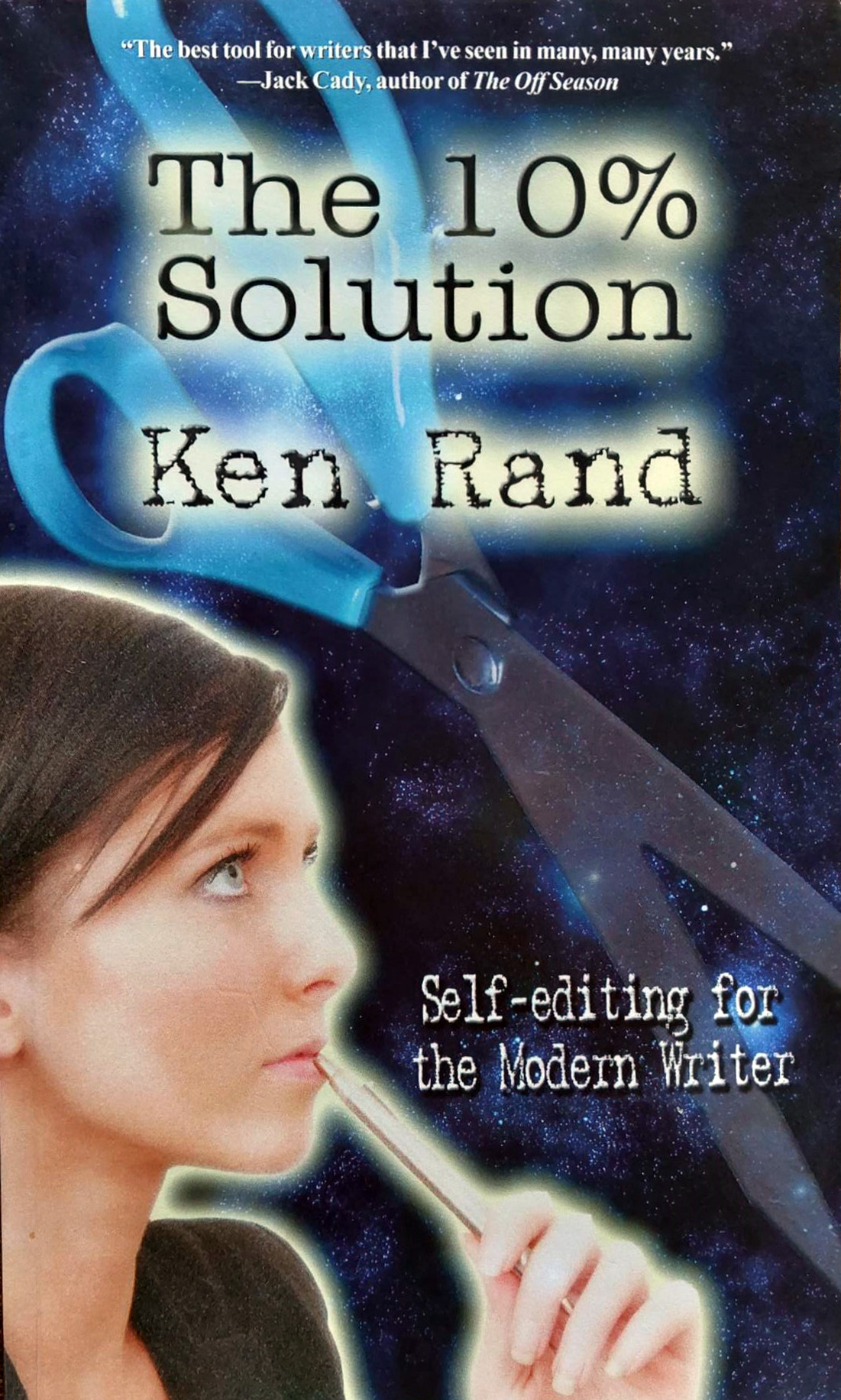January 9, 2023
A Quick Read for Self-Editing Tips and Tricks
Reviewed by Jennifer O’Donnell
The 10% Solution: Self-editing for the Modern Writer. By Ken Rand. 108 pages. ISBN. 978-1933846743
I can’t remember how I learned about The 10% Solution: Self-editing for the Modern Writer by Ken Rand, but since discovering it six years ago, it’s been my number one recommended book for translators. At 90 pages this is a tiny book with its cheap cover, so you probably wouldn’t think it was anything special, but one reason I love it is because it practices what it preaches.
 The main point of the book it that you can cut any text down by 10 percent to give it punch and improve readability. If you gave me a 250-page textbook on the same subject, then something’s clearly gone wrong!
The main point of the book it that you can cut any text down by 10 percent to give it punch and improve readability. If you gave me a 250-page textbook on the same subject, then something’s clearly gone wrong!
The book starts with a two-page foreword by author Dean Wesley Smith introducing Ken Rand, then Rand himself jumps in setting you up for exactly what this book is and what to expect from it.
“The Ten Percent Solution isn’t meant to be gospel...It’s a tool, not a school. It’s modular. You adapt the process to your own methods, style and goals, and you adjust it from project to project. Use what you want, discard the rest.” (p.15)
The rest of the book is split into “Theory” and “Practice.” Theory is really short. Rand starts with how the 10 percent solution came about and how it evolved over 30 years. The (again, short) chapter “Chemistry” sets the stage—specifically it’s about how Rand stumbled on Writing the Natural Way by Dr. Gabriele Lusser Rico and realized his 10 percent solution wasn’t anything new! It recontextualized the practice for him (and for the reader).
Dr. Rico argues that your right brain is a creator and left brain is an editor. You want the two halves of your brain to work together. And where Writing the Natural Way focuses on the creative writing side, The 10% Solution focuses on the editing side.
Bouncing off this, Rand recommends you write and edit at different times. Make sure there’s a break in-between writing (translating) and editing so you can switch brain modes. Change rooms, change devices, even a physical “editor” hat can help.
The second half of the book covers “Practice.” Rand lists common words and syllables which might provide a hint to problematic phrases. “Were” “was” “by” “has” can be indicators of passive voice, which slows readers down. “He/her” “had” might reveal redundant wording. Or “-ion” which might indicate longer words (such as “indication”), and a high register of writing. This might work if you’re writing in that style, but could be problematic for a casual, lower register tone.
This section is also valuable because he sprinkles in additional advice and notes which explain the method behind the madness. This helps give context. He also mentions why editing something a certain way might be a good or bad idea. He comments several times that editing everything might not always be a good thing. It depends on context.
Practice ends with a macro look at editing. Advice on final editing techniques includes such topics as reading aloud, printing out, or changing the font. This will hopefully catch any remaining issues.
This very short book ends with a very short example of the 10 percent solution in practice. With a 500-word piece rewritten with 50 words cut out. The difference in readability is staggering.
This book was written for writers, but translators are writers too, and the advice is invaluable. It helped me realize that we can easily fall for the traps of redundant wording, passive voice, and annoying repetition which can bog down our translations.
This slim volume is easy to read, re-read, apply to your own work, and highly recommended.
P.S. Yes, I used these techniques for this review.
